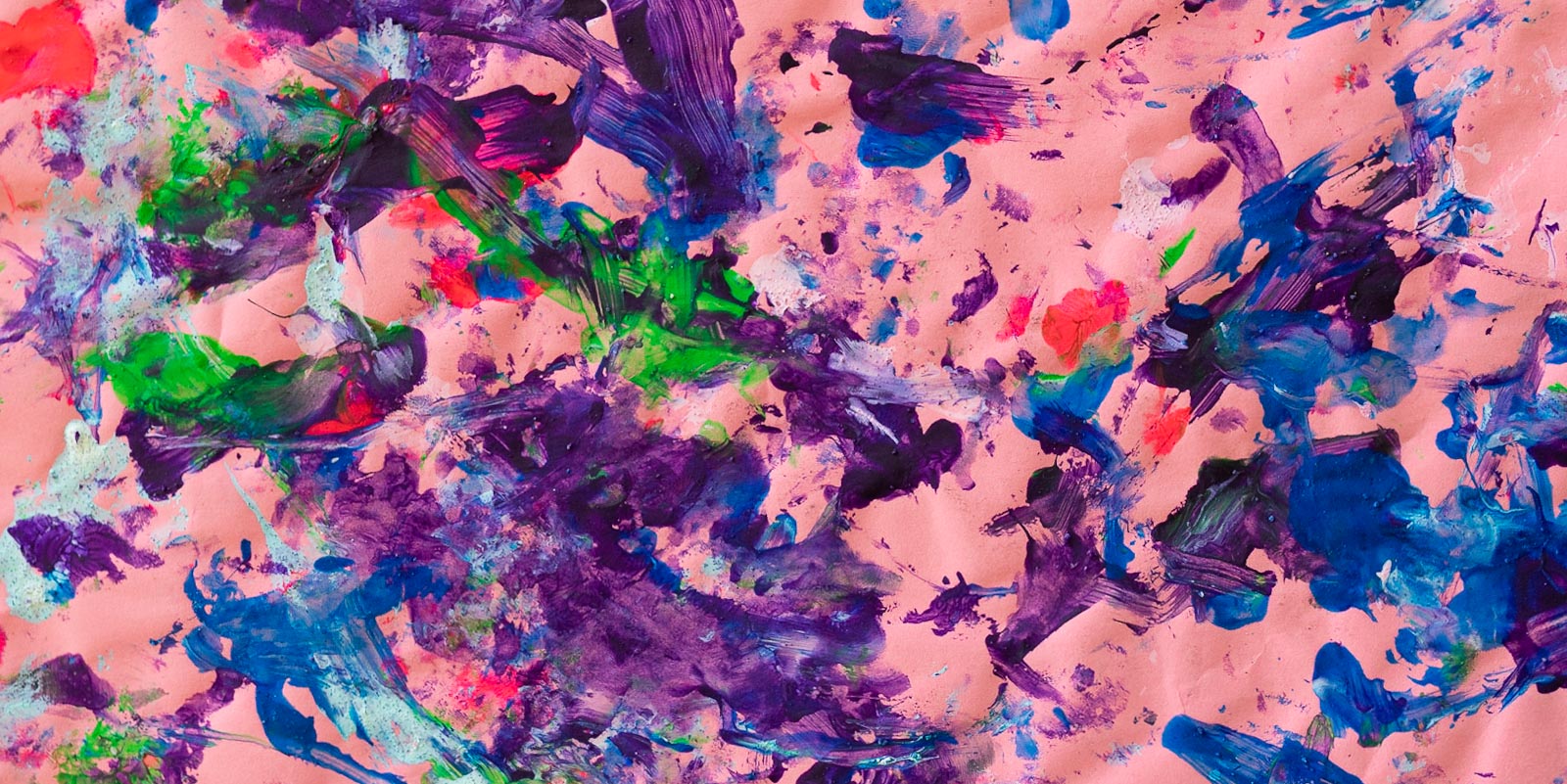
Visual arts can be both fun and therapeutic for children. The diverse materials and techniques provide opportunities for sensory stimulation and personal expression. Older children may be interested in artists and art galleries within their community.
Many early childhood educators don't consider themselves to be artistic. If this sounds like you, remember:
- the process is more important than the final product
- there are more styles of art than photorealism
- educators can get messy, experiment and learn alongside children.
EYLF learning outcomes
Visual arts aligns with the Early Years Learning Framework. Children can use a range of media (5.3), natural materials, and processed materials (4.4).
Visual art is experimental and involves problem solving, inquiry, hypothesising, researching and investigating (4.2), commitment, enthusiasm, persistence, curiosity, imagination, creativity and confidence (4.1).
Learning experiences
Explore various visual art forms
Visual art forms include:
There are other types of art and self expression too, like performing arts.
Create ongoing artworks
In many child care centres, children are expected to complete a painting in a few minutes, hang it out to dry, and then take it home. Unfortunately, this reinforces the belief that art is a product, not a process of discovery and exploration.
Provide for ongoing or long-term artworks where children can store and revisit the same piece. Encourage children to build on, recycle and upcycle their art. Explain it is also okay to share art (with permission) so children can build on each other's pieces.
Create ephemeral art
Ephemeral art only lasts a short time. Examples include sand sculptures, leaves arranged in patterns on the ground, body art, and temporary mural projects. It promotes appreciation for fleeting moments, recycling and sustainability.
Plan art in advance
Suggest to preschool children that they pre-plan their art. This could involve:
- sketching a sculpture before moulding it
- making costumes for a dance
- having a discussion with a friend
- researching artists or art techniques
- simply gathering the required materials.
Learning environments
Create a work-in-progress shelf
A work-in-progress shelf is a designated space for storing and displaying projects that are currently in progress. This can include a physical shelf in a classroom or a virtual space such as a computer folder.
Create an art studio
In Reggio Emilia education, art areas are often referred to as ateliers. They are dedicated spaces for art making and exploring various art materials, techniques and processes. Read about setting up an artelier on Interaction Imagination.
Create a space that is flexible, well-lit and spacious. Children should be able to move freely and to create art in a variety of formats, including messy, large-scale and group projects. Children should have access and permission to experiment freely with diverse materials.
Educators can also broaden their vision of an art studio. What if you had a space for children to explore light or sound? How would you set up a combined space for bubble play AND videography?
Play background music
Music is inspirational. Play music or background sound effects while children make art. Talk about the music and how it might influence their work. How does it make you feel? How do you want to move?
Community connections
Organise an art exhibition
Educators can help children organise their own art exhibition. This could be held at your centre, your library or council, or even a local gallery. The space could be shared with nearby children's services. Consider choosing a theme that is significant to the children (e.g. the future, community, or belonging).
Read about making your own art museum as a project on NAEYC.
Create collaborative artworks
Invite children from another room, community volunteers or a local artist to collaborate with your children on an artwork. Children can learn about respect, compromise, turn-taking and physical boundaries, while gaining a sense of community.
Discussions
Identify and talk about artists:
- What is an artist?
- What do they do?
- Why do they do it?
- What are their lives like?
- Can anyone be an artist?
Reflections
- Which art materials should children have independent access to? Why?
- Are plastic aprons needed? Is there an alternative solution that can give children more freedom to move?
- Do you believe it is okay to give formal art instruction? If you demonstrate various art techniques will this stifle or support children's creativity?
Resources
Picture books
Beautiful Oops! by Barney Saltzberg
Websites
- The Good Enough Studio
- CELA: What to do when educators are not arty
- Interaction Imagination: What is messy art? Why do teachers hate mess?
- QAGOMA Kids: Online art activities
- Art Gallery NSW: Kids art activity sheets
